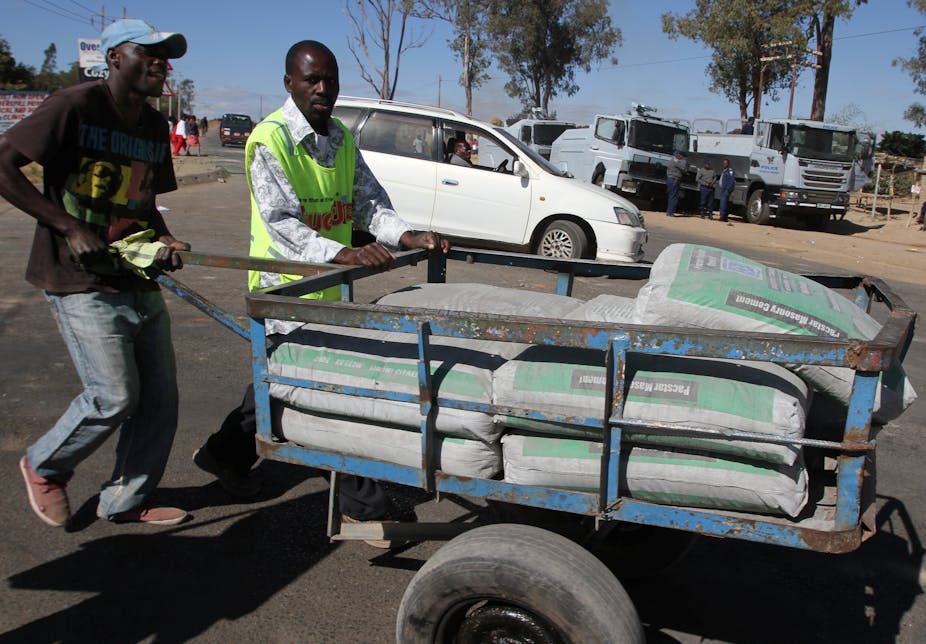Zimbabwe’s recent ban on imports from South Africa suggests that the country has taken action that undermines the Southern African Development Community (SADC) regional integration project. This is because trade is an important element of regional integration. It promotes cross-border and local economic development, and provides the foundation for cross-border cooperation and integration, and the development of good neighbourly relations. The Economic Community of West Africa’s common approach to migration is a good case in point.
Regional integration, as seen through the Balassian Model, envisages the process taking place through various stages. These include progressing from establishing a free-trade area, followed by the adoption of a common external tariff and the formation of a customs union. The customs union evolves to a common market when member states remove all restrictions on the movement of capital, labour, goods and services. The countries then set up an economic and monetary union and at this stage supranational authorities coordinate economic policies.
Total integration happens when there is a supranational authority that superintends policies in a region. The example of the European Union seems to validate these stages of regional integration.
This conceptualisation of regional integration emphasises the role of state institutions. This is very useful, but doesn’t consider the role of grassroots or non-state actors. These include informal cross-border traders who move, among others, goods and capital across borders.
Research by the Southern African Research and Documentation Centre suggests that SADC’s informal cross-border traders are a case in point. With this in mind, it is possible to reflect on how the actions and policies of a SADC member state can affect informal cross-border trade, traders and regional integration.
The devastating ban
In June the government of Zimbabwe implemented Statutory Instrument 64 of 2016, which bans the import of certain South African goods. These include coffee creamers, camphor creams, white petroleum jellies, plastic pipes and fittings, builders’ products, baked beans, cereals, bottled water and secondhand tyres. After the implementation of the ban, informal cross-border traders protested at the Beitbridge border after their goods were confiscated.
A social media campaign advised cross-border traders, truck and other drivers, civic groups and churches that commercial activity at all Zimbabwean borders would be shut down. The people behind the social media campaign are demanding that the Zimbabwean government lifts the ban.
As a result of the ban, shops at Musina in South Africa have suffered serious losses. Zimbabweans bought goods from South Africa and Musina for resale and domestic consumption. They were outraged, as the ban denies them their livelihoods. Their families in Zimbabwe either survived on goods remitted or on the money realised from the resale of goods. The Zimbabwean government said that the ban was limited to businesses and that ordinary people could still import the goods in question to Zimbabwe. But reports suggest that the ban applied to all classes of people, including informal cross-border traders.
A give-and-take relationship
Two issues are important in this discussion. The first is that cross-border traders and ordinary people from Zimbabwe who buy goods from South Africa, either for resale or family consumption, actually play an important role in the regional integration of economic activities.
Zimbabwean informal cross-border traders are responsible for the export of South African-produced goods. This is mutually beneficial. South African businesses grow, creating employment. On the Zimbabwean side, people access the goods they want, and they sell and make money to meet a variety of needs.
This give-and-take relationship shows the bottom-up or grassroots form of the integration of economic activities between Zimbabwe and South Africa through informal cross-border activities. The fallout from the ban bears testimony to a rupture in the connectivity of economic activities and flows. The ban has clearly had a negative impact on informal cross-border trade and the flow of economic activity between Zimbabwe and South Africa.
And, given that informal cross-border trade has sustained many families in Zimbabwe, it appears as though the Zimbabwean government is aggressively working against its own citizens, as well as the regional integration project.
Second, informal cross-border trade is an important pillar in the SADC regional integration project. It builds relations, economic exchanges and flows between business enterprises in member states.
West Africa sets a fine example
West Africa’s regional integration bloc provides an inspirational example. Through its common approach to migration it has harmonised regional policies to ensure policy fluency and uniformity relating to bilateral agreements, economics, trade, development and migration issues. In addition, through the Regional Cross-Border Cooperation Fund, the bloc targets supporting border populations through development programmes and the establishment of good neighbourly relations.
SADC’s 1992 Declaration and Treaty targets, among others, strengthening and consolidating the long-standing historical, social and cultural links among the people of southern Africa. The treaty lists several programmes that should be put in place so as to achieve this. These include policies that aim at the progressive elimination of hurdles to the free movement of labour, capital, goods and services. By implementing the import ban the Zimbabwean government appears to be working against this and the broader objective of establishing the African Economic Community.
Regional integration is an ongoing project in SADC. Made up of 15 member states, the regional bloc has, in the initial stages of regional integration, seen the liberalisation of economies, reduction of trade tariffs and attainment of minimum conditions for a free-trade area. SADC’s 2001 regional development plan outlined a 15-year regional integration roadmap. The steps envisaged are:
free-trade area by 2008;
a customs union by 2010;
a common market by 2015;
a monetary union by 2016; and
an economic union by 2018.
It is clear that deadlines have not been met, which means a lot needs to be done. As part of this regional block, Zimbabwe should be actively implementing policies that work towards the progressive elimination of all forms of borders for people, goods, services and capital. Yet the ban runs counter to the stated aims and objectives of SADC’s declared regional integration intentions.

